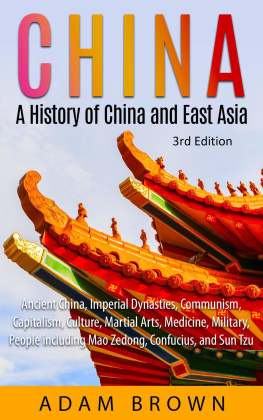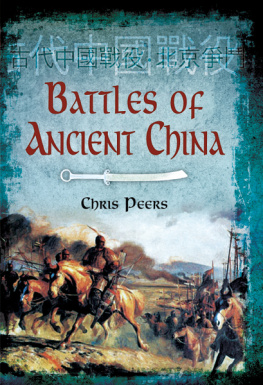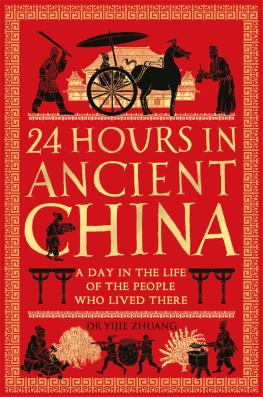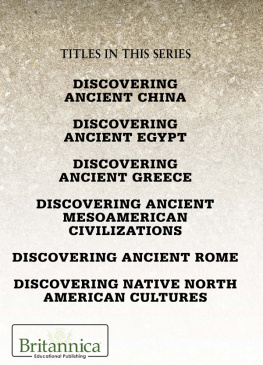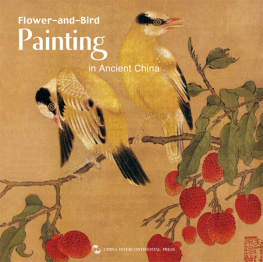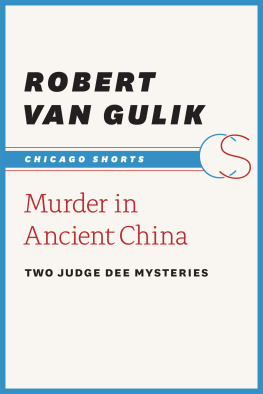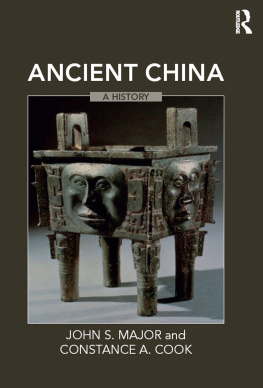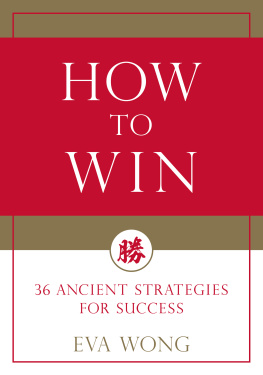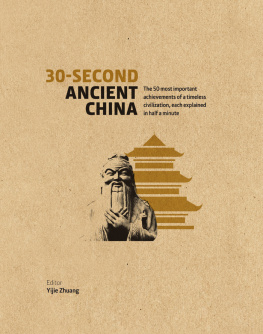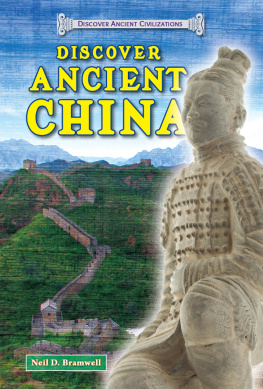Verstappen - The Thirty-Six Strategies of Ancient China
Here you can read online Verstappen - The Thirty-Six Strategies of Ancient China full text of the book (entire story) in english for free. Download pdf and epub, get meaning, cover and reviews about this ebook. year: 2012, publisher: Woodbridge Press, genre: History. Description of the work, (preface) as well as reviews are available. Best literature library LitArk.com created for fans of good reading and offers a wide selection of genres:
Romance novel
Science fiction
Adventure
Detective
Science
History
Home and family
Prose
Art
Politics
Computer
Non-fiction
Religion
Business
Children
Humor
Choose a favorite category and find really read worthwhile books. Enjoy immersion in the world of imagination, feel the emotions of the characters or learn something new for yourself, make an fascinating discovery.

- Book:The Thirty-Six Strategies of Ancient China
- Author:
- Publisher:Woodbridge Press
- Genre:
- Year:2012
- Rating:3 / 5
- Favourites:Add to favourites
- Your mark:
- 60
- 1
- 2
- 3
- 4
- 5
The Thirty-Six Strategies of Ancient China: summary, description and annotation
We offer to read an annotation, description, summary or preface (depends on what the author of the book "The Thirty-Six Strategies of Ancient China" wrote himself). If you haven't found the necessary information about the book — write in the comments, we will try to find it.
The Thirty-Six Strategies of Ancient China — read online for free the complete book (whole text) full work
Below is the text of the book, divided by pages. System saving the place of the last page read, allows you to conveniently read the book "The Thirty-Six Strategies of Ancient China" online for free, without having to search again every time where you left off. Put a bookmark, and you can go to the page where you finished reading at any time.
Font size:
Interval:
Bookmark:
The Thirty-Six Strategies of Ancient China
Stefan H. Verstappen
Copyright 1999 by Stefan H. Verstappen
First Edition Published by China Books, SF 1999
E Book Edition 2012
ISBN 978-0-9869515-8-9

Table of Contents
The THIRTY-SIX STRATEGIES is a unique collection of ancient Chinese proverbs that describe some of the most cunning and subtle war tactics ever devised.
Whereas other Chinese military texts such as Sun Zi's THE ART OF WAR focus on military organization, leadership, and battlefield tactics, the THIRTY-SIX STRATEGIES are more suitably applied in the fields of politics, diplomacy, and espionage. These proverbs describe not only battlefield strategies, but tactics used in psychological warfare to undermine both the enemy's will to fight and his sanity. Tactics such as the 'double cross,' the 'frame job,' and the 'bait and switch,' can be traced back through thousands of years of Chinese history to such proverbs as Hide the Dagger Behind a Smile, Kill With a Borrowed Sword, and Toss Out a Brick to Attract Jade, respectively. Though other Chinese military works of strategy have at least paid lip service to the Confucian notion of honor, the THIRTY-SIX STRATEGIES make no pretense of being anything but ruthless.
For the Western reader the THIRTY-SIX STRATEGIES offers timeless insights into the workings of human nature under conditions of extreme stress. Many of the proverbs are based on events that occurred during China's Warring States Period (403-221 B.C.). This was a time so infamous that a later emperor banned history books of that era on the grounds that they contained accounts of such a devious nature, they would morally corrupt all who read them. Many of those accounts are presented here along with the exploits of some of the Orient's greatest generals, kings, emperors, and shoguns.
Over 118 anecdotes are included to both explain and offer examples of each strategy's application. By learning from the old masters of the art of deception, one is better able to spot the modern pretenders, for, though the players come and go, the game remains the same.
HISTORY OF THE THIRTY-SIX STRATEGIES
The origin of the THIRTY-SIX STRATEGIES are unknown. No author or compiler has ever been mentioned, and no date as to when it may have been written has been ascertained.
The first historical mention of the THIRTY-SIX STRATEGIES dates back to the Southern Qi dynasty (A.D. 489-537) where it is mentioned in the Nan Qi Shi (History of the Southern Chi Dynasty). It briefly records, "Of the 36 stratagems of Master Tan, running away is the best." Master Tan may be the famous General Tan Daoji (d. A.D. 436), but there is no evidence to either prove or disprove his authorship. While this is the first recorded mention of THIRTY-SIX STRATEGIES, some of the proverbs themselves are based on events that occurred up to seven hundred years earlier. For example, the strategy 'Openly Repair the Walkway, Secretly March to Chencang is based on a tactic allegedly used by the founder of the Han dynasty, Gaozu, to escape from Sichuan in 223 B.C.
The strategy Besiege Wei to Rescue Zhao is named after an incident that took place even earlier, in 352 B.C., and is attributed to the famous strategist Sun Bin.
All modern versions of the THIRTY-SIX STRATEGIES are derived from a tattered book discovered at a roadside vendor's stall in Sichuan in 1941. It turned out to be a reprint of an earlier book dating back to the late Ming or early Qing dynasty entitled, THE SECRET ART OF WAR, THE THIRTY-SIX STRATEGIES. There was no mention of who the authors or compilers were or when it was originally published. A reprint was first published for the general public in Beijing in 1979. Since then several Chinese and English language versions have been published in China, Hong Kong, and Taiwan.
Without any other information, current speculations about the origin of the THIRTY-SIX STRATEGIES suggest that there was no single author. More likely the book derived from a collection of idiomatic expressions taken from popular Chinese folklore, history, and myths.
They may have first been recorded by General Tan and handed down verbally or in manuscript form for centuries. It is believed that sometime in the early Qing dynasty some enterprising editor collected them and published them in the form that comes down to us today.
NOTES ON THE TEXT
The original text of THE SECRET ART OF WAR, THE THIRTY-SIX STRATEGIES is rather short, comprising only 138 Chinese characters. It merely names each strategy followed by a brief explanation. The book was divided into six categories of six strategies each. The six categories are said to correspond to six situations as follows: Stratagems when in a superior position; Stratagems for confrontation; Stratagems for attack; Stratagems for confused situations; Stratagems for gaining ground; and Stratagems for desperate situations.
This division is based on the hexagrams of the I-CHING (a hexagram being a grouping of six broken or unbroken lines). In addition, the explanation of each strategy is likewise said to be based on the interpretation of each hexagram as found in the I-CHING. Initially all this seemed to imply an almost scientific approach, but on closer examination I found the structure flawed. My guess is that elements of I-CHING numerology were added at some time merely to create an aura of mystery and antiquity (not an uncommon practice among publishers during the Ming and Qing dynasties). Since the six subtitles did little to improve understanding, I did not use them in compiling the present text, but kept to the original sequence of strategies.
I used anecdotes primarily from both China's and Japan's 'Warring States' eras, since, though separated by more than a thousand years, those eras most closely reflected the tone of the strategies. My apologies to serious scholars for I rewrote the explanations and historical anecdotes so that they would be clearer to Western readers. Any mistakes and errors are my own. I also added opening quotes from other Oriental works on strategy, and a summary. The resultant manuscript is not a direct translation, nor a list of historical facts, but rather a retelling of Chinese folklore, or more specifically military lore
In conflicts which involve large numbers of people, it is possible to get the opponent to become lax in their guard. When they are in a state of agitation and show signs of impatience, appear as if nothing is bothering you and put forth an easygoing, relaxed stance. When you perceive that the mood has been transferred (to your opponent), you have a chance to achieve victory by making a strong attack with as much speed as possible.
MIYAMOTO MUSASHI
Moving about in the darkness and shadows, occupying isolated places, or hiding behind screens will only attract suspicious attention. To lower an enemy's guard you must act in the open, hiding your true intentions under the guise of common every day activities.
WARRING STATES PERIOD CHINA
In 225 B.C. the state of Qin, having slowly increased its power over the past hundred years, now felt powerful enough to overcome its remaining opponents in open aggression. The most powerful of the remaining states was Chu. The king of Qin sent his renowned general Wang Jian to attack and conquer Chu. A year earlier Qin had sent another general, Li Xing, who suffered a humiliating defeat at the hands of Chu. The older and more experienced general Wang Jian wasn't going to make the same mistake as his predecessor and decided against invading the country directly. Instead he stopped just inside Qin's border with Chu and built a fortified stockade. The king of Chu called upon his allies to muster all available troops and rush them to the opposite side of the border.
Next pageFont size:
Interval:
Bookmark:
Similar books «The Thirty-Six Strategies of Ancient China»
Look at similar books to The Thirty-Six Strategies of Ancient China. We have selected literature similar in name and meaning in the hope of providing readers with more options to find new, interesting, not yet read works.
Discussion, reviews of the book The Thirty-Six Strategies of Ancient China and just readers' own opinions. Leave your comments, write what you think about the work, its meaning or the main characters. Specify what exactly you liked and what you didn't like, and why you think so.

